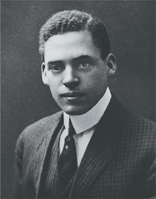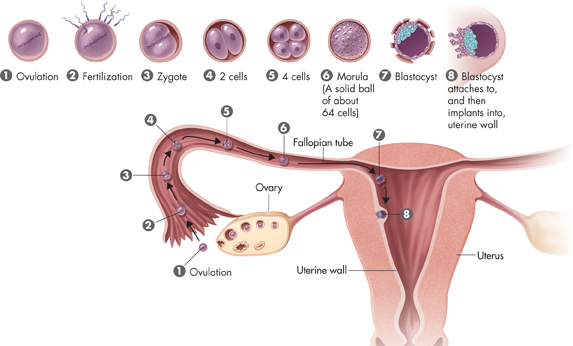What prevents more than one sperm from fertilizing an egg? Early in the twentieth century, cell biologist Ernest Everett Just found the answer. The egg cell contains a series of granules just beneath its outer surface. When a sperm enters the egg, the egg reacts by releasing the contents of these granules outside the cell. The material in the granules coats the surface of the egg, forming a barrier that prevents other sperm from attaching to, and entering, the egg.
Multiple Embryos If two eggs are released during the same menstrual cycle and each is fertilized, fraternal twins may result. Fraternal twins are not identical in appearance and may even be different sexes, because each has been formed by the fusion of a different sperm and different egg cell.
Sometimes a single zygote splits apart and produces two genetically identical embryos. These two embryos are called identical twins. Because they result from the same fertilized egg, identical twins are always the same sex.

FIGURE 34–18 Ernest Everett Just One of the great pioneers of cell biology, E.E. Just investigated the process of fertilization. He discovered that changes in an egg's cell membrane prevent more than one sperm from fertilizing an egg.
Implantation While still in the Fallopian tube, the zygote begins to undergo mitosis, as shown in Figure 34–19. As the embryo grows, a cavity forms in the center, until the embryo becomes a hollow ball of cells known as a blastocyst. About six or seven days after fertilization, the blastocyst attaches to the wall of the uterus and begins to grow into the tissues of the mother. This process is known as implantation.
At this point, cells in the blastocyst begin to specialize. This specialization process, called differentiation, results in the development of the various types of tissues in the body. A cluster of cells, known as the inner cell mass, develops within the inner cavity of the blastocyst. The body of the embryo will develop from these cells, while the other cells of the blastocyst will differentiate into some of the tissues that support and protect the embryo.

FIGURE 34–19 Fertilization and Implantation If an egg is fertilized, a zygote forms and begins to undergo cell division (mitosis) as it travels to the uterus. Once in the uterus, the embryo can implant in the uterine wall. (Note that the egg in this illustration has been greatly enlarged in comparison to the other structures.)
dTable of Contents
- Formulas and Equations
- Applying Formulas and Equations
- Mean, Median, and Mode
- Estimation
- Using Measurements in Calculations
- Effects of Measurement Errors
- Accuracy
- Precision
- Comparing Accuracy and Precision
- Significant Figures
- Calculating With Significant Figures
- Scientific Notation
- Calculating With Scientific Notation
- Dimensional Analysis
- Applying Dimensional Analysis




